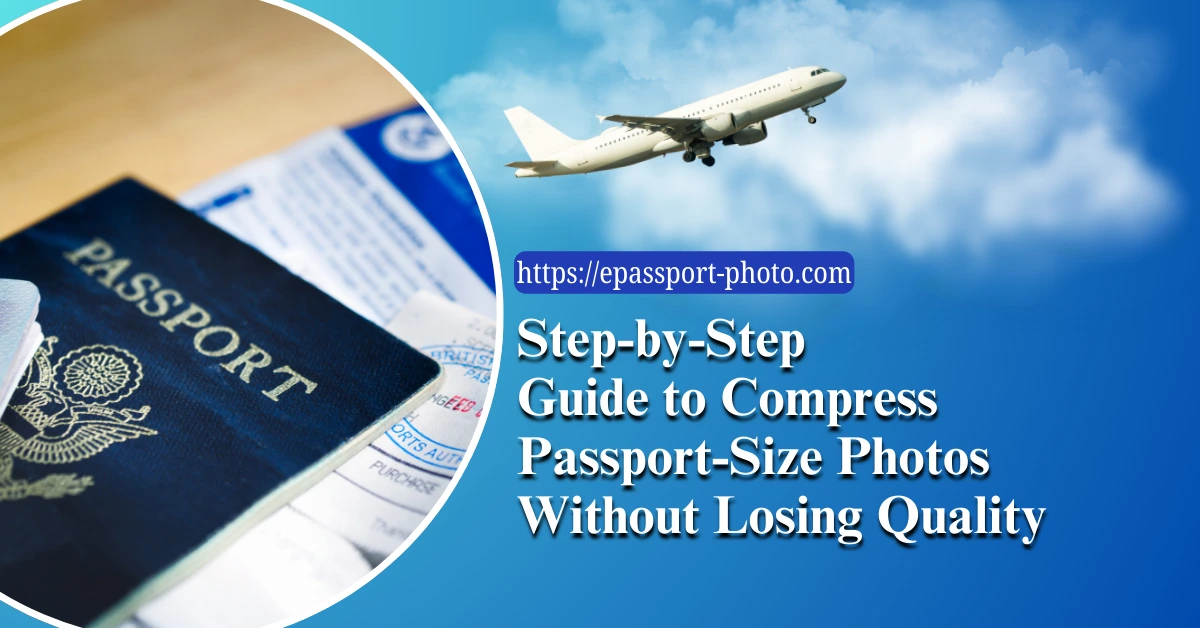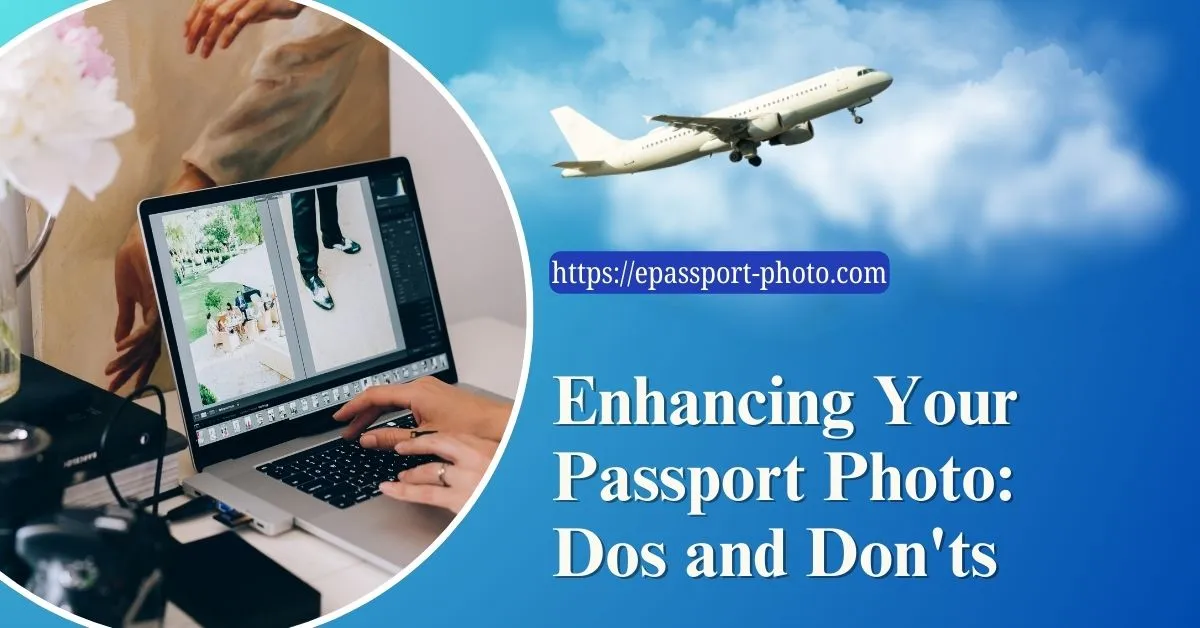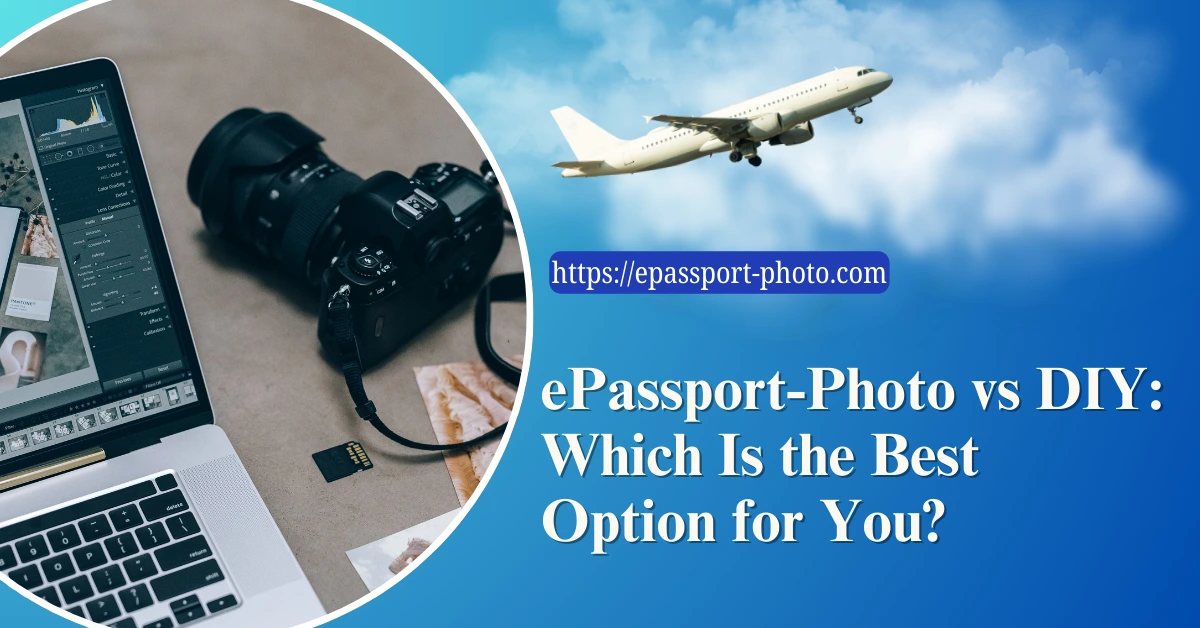Compressing Passport-Size photos is a process that allows us to reduce the size of image files without compromising their visual qualities. Knowing how to compress passport-size photos effectively makes all the difference in terms of storage space as well as upload and download time.
This step-by-step guide aims to guide you through 7 steps to compress passport-size photos, the importance of maintaining passport photo quality, tips for preserving image quality during compression, and best practices for managing compressed photos to obtain the best results.
7 Steps to Compress Passport-Size Photos
Step 1: Select the Correct Tool
The first step to compressing passport-size photos is to select the proper photo compressing tool or software. There are many software and web-based image compression tools like E-Passport Photo to compress passport-size photos.
Step 2: Import the Passport-Size Photos
The next step is to choose and import the passport-size photo that you want to compress. You can import the photo by using the âSelect Imageâ function in the tools. It is advisable to keep a copy of the original photo so that there is no data or quality loss during compression.
Step 3: Determine the Compression Setting
The next step is to review and determine the proper compression settings after importing the passport-size photos. You can select the quality of the passport-size photo, you will be given the option to choose between recommended, extreme, or half. You can even manually select the percentage of photo quality you need. It is necessary to experiment with different photo qualities to find the correct setting for each photo.
Step 4: Compress the Photo
Once the compression settings are adjusted, the next step is to compress passport-size photo. You can simply select the âCompress Nowâ button on the web-based tool. The application will then compress the photo, and you will get compressed versions of the images with smaller file sizes as outputs.
Step 5: Compare with Originals
After the passport-size photo is compressed, you should view and compare the compressed passport-size photo with the original photo. You should do it to ensure that the quality of the image remains intact and there are no distortions during the photo compression. If there are any changes you want, you can simply repeat the process.
Step 6: Save the Photo
Once you are content with the compressed photo, the next step is to save the photo on your computer or device. You can choose an appropriate file format depending on the intended use of photos; somehow, JPG files are preferred. You should also remember to give appropriate names to the files so that you can recognize them later.
Step 7: Check the image
The last step to compress passport-size photo is to check the compressed photo on various applications or platforms to ensure that they are loaded quickly and displayed correctly. You can post the photos to a website, email them, or view them on various devices to check the image. If you are not okay with the image, you can simply repeat the compression process with a different compression setting.
Importance of Maintaining Passport Photo Quality
You might have noticed that when you send photos to someone or upload them to the web or social media, the picture quality decreases. This is due to compression.
When we compress passport-size photos to save file space, we end up losing a bit of original quality. We should maintain details like the sharpness and clarity of your photo when compressing them so that you can represent yourself correctly in your passport image.
Maintaining the quality of your passport photo is a great deal. Firstly, you never know when you might need to use your passport for official reasons, be it for filling out personal information, foreign travel, or a job interview. A fuzzy and faded passport photo can cause major issues and delays.
You already know that the passport photo requirement is quite strict, and you need to fulfill the requirements for your passport photo to be accepted. A good-quality and clear photo will save you from headaches down the line.
Honestly, you wonât want to be returned home from the airport just because your passport photo looks like it was taken from a flip phone from 2005. So, just compress your photo and maintain the image quality; your future self will thank you.
Tips for Preserving Image Quality During Compression
Choose the appropriate file format for passport photo compression to minimize image degradation.
Experiment with different image compression settings to find the optimal balance between the file size and image quality.
Consider the resolution of the image when compressing it to preserve image clarity and detail.
Avoid excessive image compression to maintain the image quality.
Be careful about the type of image being compressed.
If possible, use lossless compression to preserve all of the original image data.
Consider the intended display size to maintain image quality when viewed online.
Review and optimize the passport photo compression process.
Best Practices for Managing Compressed Photos
Organizing the compressed photo is a key step in managing compressed photos. You should always keep the original photo to preserve all the original image data.
Compressed photos save space and make them load faster online, but it is always safe to keep the high-resolution version of the image. It is a smart decision to have a copy of the original photo stored safely so that you can use it for printing or editing.
You should make a habit of organizing and naming your files. If you do so, it will be easier and quicker to find the images that you are looking for. You may just organize photos by events, dates or subject matter.
Always remember to back up your photos, be it original or compressed. You can simply use cloud storage, such as Google Drive or Dropbox. This way, you can view your photos anywhere.
It is a good idea to check the resolution of the images and the file size ratio to view them properly on different devices. You will be able to arrange and manage your compressed passport-size photo without any inconvenience by following these best practices.
Final Thoughts
Thereâs no need to compromise the quality of the image when compromising your passport photo. Just use the correct technology to compress passport-size photos.
You need a passport photo for approval of your passport, visa, and plane ticket. You may need it for filling out forms on personal details and even employment opportunities.
Just donât forget to find the balance between image quality and file size, making your passport photo submission process smoother and your work less exhausting.
Use our Passport Photo Service for your next photo requirement.
FAQs
What is the best way to compress images?
The best way to compress images is to use online tools like E-Passport Photo Compressor or use software like Photoshop.
Does compressing images affect the quality?
Lossless compression doesnât affect the image quality, whereas lossy compression affects the image quality.
Is it safe to compress photos online?
Yes, it is safe to compress photos online. It is better if you choose a trusted website that values privacy concerns.
What is the best format to compress photos?
JPEG is best for photographs, PNG is best for graphics, and WEBP is best for website use. It depends upon your reasoning to compress photos.
How does image compression work?
Image compression works by reducing the image data needed to represent the image.
What is the best image encoding?
JPEG, WEBP, PNG, and HEIF/HEIC are some of the best image encoders based on your image compression reasoning.
Do cameras compress images?
Yes, cameras compress images as most of them save images in JPEG format, which is a lossy method. There are high-end cameras that store images RAW with greater image data.







